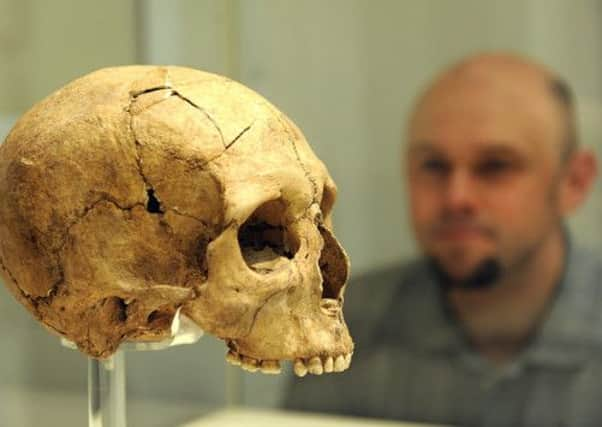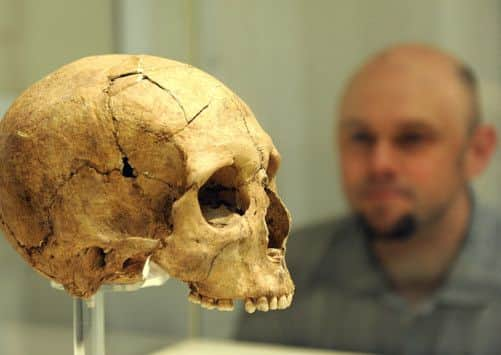Ancient Egyptians’ links to Yorkshire uncovered


But now the “amazing” discovery that Egyptian mummies were buried near Barnsley nearly 2,000 years ago has been revealed by the curator of a new exhibition which shows the civilisation has closer links with the region than ever previously imagined.
Egyptologist Joann Fletcher, who was born in the town, said: “There is more and more evidence that this was happening and we are undertaking scientific analysis to underpin this really amazing possibility.
Advertisement
Hide AdAdvertisement
Hide Ad“You don’t think 2,000 years ago that Ancient Egyptians came to Yorkshire – but they did.”


The practice of enbalming and wrapping the dead in linen was brought to England by the Romans, the University of York professor and BBC TV presenter said.
But analysis of bones found in Yorkshire dating back to this time has found some of the mummies were born and raised in North Africa.
“It really does widen your horizons – in some ways it blows your mind,” she said.
Advertisement
Hide AdAdvertisement
Hide AdThe Romans Are Coming exhibition, which is now open at the new Experience Barnsley museum at the town hall, features an AD 300-400 mummy cast that would have encased a child’s body.
Gypsum plaster was used to cover embalmed, linen-wrapped corpses to protect them from Yorkshire’s damp climate.
“We have certainly got evidence that the Romans in our part of the world were embalming, mummifying and wrapping in linen their dead, according to – we believe – Egyptian customs,” she said.
Examples of this have been discovered in Pollington, a few miles north of Barnsley and Doncaster, as well as in York and Castleford.
Advertisement
Hide AdAdvertisement
Hide AdAnd evidence of burial sites around Thurnscoe, near Barnsley, has also recently been found, Dr Fletcher said.
“More work needs to be done because this is just the tip of the iceberg,” she added.
“I’m wanting to put together a comprehensive picture of the whole of the Barnsley area – where people lived, where they farmed, where they worked, where they were buried, where they worshipped.”
She added: “Come back in 10 years and we’ll have a much better idea.
Advertisement
Hide AdAdvertisement
Hide Ad“We’ve only just started looking to be honest, because until very recently who knew these existed?”
Egypt became part of the Roman Empire when Mark Antony and Cleopatra VII – the last pharaoh – were defeated at the Battle of Actium in 31 BC.
Their customs and artefacts were subsequently spread across the world as the Romans conquered more and more nations.
A coin minted in the year of their downfall and found among a treasure hoard in Darfield, near Barnsley, also features in the exhibition.
Advertisement
Hide AdAdvertisement
Hide AdDr Fletcher said the discovery of the silver piece, which features an image of Mark Antony and was made just before “one of the greatest battles, the most decisive battles, in world history”, had blown her mind.
“They had minted these coins to pay their legions, to pay for the 500 war ships Cleopatra herself had funded – and of course these coins then end up in Darfield,” she said.
Bronze figurines of Egyptian gods Isis, Serapis and Apis discovered in the region also feature in the exhibition alongside a collection of Roman pottery, jewellery, clothing and coins.
It is the first time the artefacts from the Barnsley area – many of which were being stored at museums in Doncaster, Sheffield and beyond – have been brought together.
Advertisement
Hide AdAdvertisement
Hide Ad“It is a very, very special exhibition,” said Dr Fletcher, who said there had largely been “tumbleweed” in South Yorkshire when it came to the history of Roman Britain until now.
“It’s the first of its kind in this wonderful museum and it’s basically the first of many temporary exhibitions looking at the wealth of artefacts in Barnsley.
“We have been able to look at the evidence and put it on the map for the first time.”
Dr Fletcher will be giving a talk, Barnsley, Egypt and Beyond, at the museum on Saturday, October 19. The exhibition runs until Sunday, January 5, 2014. For more information visit www.experience-barnsley.com.